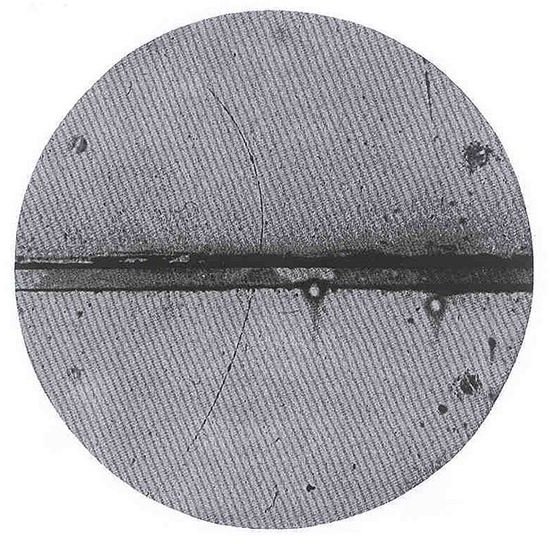Is Antimatter Real?
Paul Dirac, an English theoretical physicist, was the first to introduce the idea of antimatter back in 1928. Although he never used the term himself, he managed to predict the theoretical existence of antiparticles through his relativistic version of the Schrödinger wave equation. Carl D. Anderson in 1932 discovered antielectrons and named them “positrons” (these are positive electrons). Similarly, other antiparticles were also discovered such as the antiproton (negative proton).
A Scientific Explanation of Antimatter
But what is antimatter? The name implies that it is the opposite of matter. Since normal matter is composed of particles, antimatter is composed of antiparticles correspondingly. Each particle has its antiparticle and although they have equal masses, their electric charges are reversed.
As mentioned, the positron (e+) and the antiproton (p-) are the antiparticles of the negatively charged electron (e-) and the positively charged proton (p+) respectively. A positron and an antiproton form an antihydrogen atom in exactly the same way that a proton and an electron form a normal hydrogen atom. This means that the laws of physics are almost identical for both types of atoms.
Finally, since particles consist of quarks, an antiparticle will consist of antiquarks. Therefore, all particles have a counterpart, including the chargeless neutron (an antineutron is composed of antiquarks).
Experiments Today
We know a lot about theory, but is antimatter real? Speaking with facts, the existence of the antiproton was experimentally confirmed in 1955 by two physicists, E. Segre and O. Chamberlain of the University of California. In 1995, CERN managed to bring into existence nine antihydrogen atoms, and in 2002 they announced that they had created the world’s first “cold” antihydrogen. Just recently, on April 26, 2011, they announced that they had trapped 309 antihydrogen atoms, some for as long as 1,000 seconds. Therefore, antimatter experimentation has proven its existence beyond any doubt.
_
Generation of Antiparticles
Antiparticles are mainly generated during the collision of subatomic particles. Particles such as protons hit a target which is made of metal and release huge amounts of energy. This energy combined with high temperature and pressure, creates short lived antiprotons which instantly annihilate when they meet their proton-match.
The well-known Antiproton Decelerator (or AD) in CERN produces low energy antiprotons that can be used for the synthesis of antihydrogen atoms. More specifically, almost 10 trillion protons hit the target each minute, producing about 10 million antiprotons. Some of them enter the ring of the vacuum pipe where strong electromagnetic fields bend the trajectory of the antiprotons and decelerate them. As soon as their speed reaches 10% of the speed of light, they are ejected from the ring.
Fiction or Future Applications?
Some of the most common applications for antimatter have a rather science-fictional base and involve the construction of extremely powerful weapons and novel propulsion systems. Science-fiction novels and film industries have introduced robots with brains having antimatter pathways and spacecraft with antimatter engines and propulsion. Although, in theory both applications are feasible, in practice they would be extremely difficult. Creating significant amounts of antimatter with the present technology would take millions and millions of years, not to mention that this would be a cost-prohibitive process.
Apart from any fictional applications, antimatter is already used in modern medicine as a medical diagnostic tool. A technique known as Positron Emission Tomography (PET) injects radioactive substances inside the body of a patient and then detects the emitted positrons to create a map of where the substance has spread within the body. This is a great tool for the measurement of blood flow, and the detection of coronary artery disease or even cancer.
Final Questions
A good question to answer now is: Where is all the missing antimatter? Scientific observations have shown that matter dominates the universe as far as we know. This fact is supported by research made by the High-Energy Antimatter Telescope, the Alpha Magnetic Spectrometer aboard NASA’s Space Shuttle, and NASA’s orbiting Compton Gamma Ray Observatory.
Antimatter is rare and can only be observed in the upper atmosphere where high-energy cosmic rays impact the existing matter and produce small quantities of antiparticles with a lifetime of a few 10 -8 sec. NASA has recently announced that the strong electric fields near the tops of thunderstorms create antimatter beams. Antiparticles are also produced in the center of the Milky Way or other galaxies where high energy interactions occur (e.g. interaction of relativistic jets with the interstellar medium). It seems that there is an obvious asymmetry of matter and antimatter in the visible universe, a fact that raises even more questions such as why such an imbalance exists and whether there are other worlds that are made up entirely of antimatter.
Sources:
- LIVEfromCERN
- “What is antimatter?”, ScientificAmerican.Com
- “What is antimatter and why does it matter?”, Physorg.Com
Images:
- “Photograph of the First Positron Ever Identified. Its Track is Bent Due to the Existence of a Magnetic Field”, wikipedia.org
